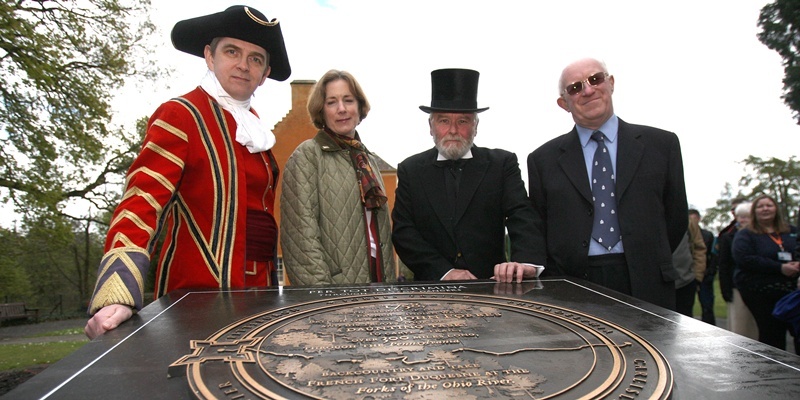Dunfermline now boasts a permanent memorial to a heroic son.
General John Forbes is credited with turning the tide of American history in favour of British forces in the Seven Years War when he defeated the French, capturing a strategically important fort and founding what is now Pittsburgh.
Now a memorial, gifted by the people of Pennsylvania, stands alongside the Forbes’ ancestral home, Pittencrieff House. It was unveiled on Saturday.
The Forbes Marker was presented by Laura Fisher, senior vice-president of the Allegheny Conference in Pittsburgh. She served as an executive director of French and Indian War 250, which celebrated the 250th anniversary of the founding of Pittsburgh in 1758.
The Forbes Marker commemorates the achievements of the general, and is one of a set of five installed along the route of the 300-mile trail he created on his way to capture Fort Duquesne.
In a letter Dana Linnet, the principal officer with the US Consulate General, said: ”Americans across the United States hold a deep appreciation for the thousands of important contributions by Scots and Scots Americans throughout our history. Our two nations are forever bound thanks to their achievements.
”Prominent Scottish figures in America are particularly visible and remembered here in Dunfermline, home of both General Forbes and, of course, Andrew Carnegie. However it is to General Forbes that we owe the credit and honour of founding the city of Pittsburgh.”
Ms Fisher said the visit was the culmination of many years work for her and her colleagues.
In unveiling the bronze marker they honoured a ”wonderful collaboration” among Pennslyvanian communities and those on this side of the Atlantic.
”It is my hope that these medallions now installed in Pittsburgh, Ligonier, Bedford, Carlisle and Dunfermline will encourage reflection and continuing collaboration and friendship among the Forbes communities.
”Places like Dunfermline although there is no other place like this, with its gorgeous landscape and plethora of historic buildings bring the past to life in deeply personal and meaningful ways.
”We believe that the stories historic sites can tell matter, and we lose touch with our past to our detriment and sometimes danger.”
General Forbes was, she said, someone who understood Native Americans, pursued both military and diplomatic channels and showed great moral and physical courage.
The debts that Forbes, who died soon after his campaign, incurred while serving in the British army bankrupted his family, forcing them to sell the Pittencrieff estate.
It was bought by Andrew Carnegie, who as a young boy wasn’t permitted access to the glen. Eventually buying it back, he gifted it to the people of Dunfermline.
In an extract from his autobiography Carnegie said he was very aware of these connections and wrote that two Dunfermline men had been lairds of Pittencrieff whose chief work was in Pittsburgh, one naming it and the other labouring for its development.
The day’s events were organised by Dunfermline Heritage Trust, Fife Council and Dynamic Dunfermline.
Pittencrieff House Museum was open throughout the day with a special showing of an exhibition, A Tale of Two Cities, on the links between Pittsburgh and Dunfermline.
